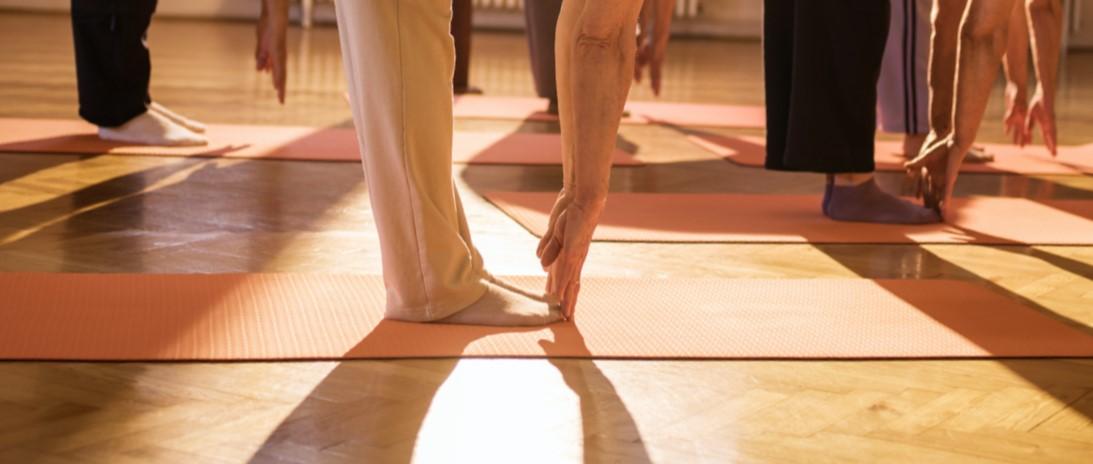
How to work out in a heatwave
Peer reviewed by Dr Sarah Jarvis MBE, FRCGPLast updated by Lydia SmithLast updated 21 Jul 2021
Meets Patient’s editorial guidelines
- DownloadDownload
- Share
- Language
- Discussion
When it's hot and humid out, your usual morning run can feel like torture - and ice cream in the shade is definitely preferable to hitting the gym. So how can you keep on top of your exercise regime when things heat up outside?
In this article:
Continue reading below
Why is exercising in heat difficult?
The British summer is unreliable at best and while you keep your fingers crossed for sunshine, scorching temperatures can make exercising feel like a chore.
If you've ever struggled during a run on a hot, humid day, you're not alone. There are several reasons why exercise can feel harder when it is warm. The optimum temperature for your body is 37°C, but both exercise and hot weather increase your core temperature - especially when you combine the two at the same time.
You have several mechanisms to help you cope with heat stress. First, blood vessels dilate to increase blood flow to the skin, which allows excess heat to radiate away from your body. Then you begin to sweat which cools the skin and subsequently the whole body.
However, cooling down is more difficult in humid weather because perspiration doesn't evaporate as quickly from your skin. This means your body has to work even harder to cool itself, which raises your heart rate too.
In addition, excessive sweating can lead to dehydration and salt loss. Around 60% of your body is water and it plays a key role in every bodily function. You can lose a lot of fluid when you exercise - as much as a litre or two an hour - mainly through sweating and breathing. You'll likely lose even more if it's hot and humid, which can deplete the fluid and electrolytes in your body. In turn, this can make you feel tired and sluggish as it becomes more difficult for blood to flow to your muscles.
Don't take a holiday from exercising
Although it might feel challenging, it's important to stay active in the summer months. Not only is exercise good for your physical health, it decreases stress hormones like cortisol and increases 'feel-good' endorphins. Physical activity also stimulates the release of the brain chemicals dopamine, norepinephrine and serotonin, which play an important part in regulating mood.
"It is important to stay active all times of year, even when it's hot and you don't feel like exercising," says Peter Hopson, a personal trainer based in Leeds, West Yorkshire. "This is because, for fitness and health, consistency is key. If it's hot for days and weeks and you put off exercise until it's cooler, you may be undoing all the hard work you have put in to improve your health and fitness up to that point.
"It may also lead to you stopping exercise completely as you get out of the habit," he adds. "Once you've stopped it is much harder to get back going again. There are always ways to modify what you do in the heat."
Continue reading below
What are the risks of exercising in heat?
Although exercise is important, being active when it's hot does come with more risks. "If you don't take reasonable precautions when exercising in the heat, the implications can be very serious," says Hopson. "Dehydration, sunburn and heatstroke are all common problems. These can lead to much more serious issues."
Dehydration means your body loses more fluids than you take in. If it's not treated, it can get worse and lead to serious complications such as heat exhaustion, heatstroke, seizures and kidney failure.
The symptoms of dehydration include:
Feeling thirsty.
Dark yellow or strong smelling urine.
Feeling dizzy or light-headed.
Feeling tired.
A dry mouth.
Urinating fewer than four times a day.
There's also a high risk of heat exhaustion or heatstroke during hot weather or exercise. Heat exhaustion can occur after you've been exposed to high temperatures and is often accompanied by dehydration.
Signs of heat exhaustion include:
Headaches.
Dizziness.
Confusion
Feeling sick.
Excessive sweating.
Fast breathing.
Being very thirsty.
A high temperature.
Heat exhaustion is not usually serious if you can cool down within 30 minutes. However, if it turns into heatstroke, it needs to be treated as an emergency and you should seek medical treatment.
In heatstroke, your body can no longer cope. The normal mechanisms to keep your body cool stop working effectively, and your temperature soars to over 40°C. Symptoms include severe headaches, feeling or being sick, shallow and fast breathing, muscle weakness, fainting, confusion.
However by taking certain steps, you can mitigate these risks to stay healthy and comfortable when you work out.
How to stay active and safe
Stay hydrated
Making sure you're well hydrated before you exercise is really important, especially in hot conditions. If you're dehydrated before you start exercising, your core temperature will rise faster and your heart will have to work harder than usual. The current guidelines advise drinking six to eight glasses of water or other non-alcoholic fluid a day, but you'll need to drink more if exercising. Do remember that coffee and tea up to 400 mg caffeine a day (about eight cups of tea or four cups of brewed coffee) contribute to your fluid intake, but very high levels of caffeine can dehydrate you.
The amount you need to drink will depend on how much you sweat and how long you exercise for. Other factors can include your fitness level, environment and the intensity of your workout.
"To mitigate the risks you can reduce the intensity and duration of your training, and ensure you're well hydrated before, during and after," Hopson says.
Try different types of exercise
If you're not in the mood to run when it's hot, there are plenty of other types of exercise you can try. Try lower-intensity exercise, such as yoga or Pilates, or go on a walk to make the most of the clement weather.
"All varieties of exercises are great in summer," says Hopson. "You can take advantage of the warmer water with open water swimming, stand-up paddle boarding or kayaking. It's also great to take advantage of the nicer weather to get out hiking in the hills."
Avoid the hottest part of the day
It is often much cooler in the early mornings or evenings, so these can be a better time to exercise. Avoid the midday sun (between 11 am and 3 pm), which is often the hottest part of the day.
"Try to stay in shady areas, like woodland or near buildings," says Hopson. "You can also use air-conditioned facilities. Most major gyms have adequate AC these days. Apply sunscreen if you're going to be in direct sunlight."
Cool down your skin
It's also important to think carefully about your clothing if you're exercising in hot weather. Loose, light-weight, sweat-wicking clothing can be more comfortable than tight sportswear. Remember, wearing black can often make you feel warmer too.
If you do feel too hot, applying cool water to your skin can help you feel better. Cold packs, cold wet towels or water sprays can help you feel more comfortable.
Take it easy
And remember, exercising can just feel hard sometimes - especially when it is hot and humid. Don't push yourself too hard and bear in mind that less can be more. "Most importantly be mindful of how your body feels and be prepared to cut your session short if needed," says Hopson.
Patient picks for Exercise and physical activity

Healthy living
How to become more flexible
The word flexibility conjures up an image of an advanced yogi becoming tied up in knots. But the truth is, flexibility is something we all need to think about. However fit you are, if you neglect your flexibility, you leave yourself more prone to injury or find yourself unable to perform daily tasks as you age.
by Gillian Harvey

Healthy living
What is the 6-6-6 walking challenge?
It might sound like something the devil himself invented, but the 6-6-6 walking challenge has origins that are far less sinister. It’s a recent fitness trend designed to encourage consistent, low-impact exercise. The concept promotes a structured walking routine that helps you stay active every day while improving your overall health in a sustainable way. Let’s take a closer look at what it involves - and whether it’s the right fit for you.
by Victoria Raw
Continue reading below
Article history
The information on this page is peer reviewed by qualified clinicians.
21 Jul 2021 | Latest version

Ask, share, connect.
Browse discussions, ask questions, and share experiences across hundreds of health topics.

Feeling unwell?
Assess your symptoms online for free
Sign up to the Patient newsletter
Your weekly dose of clear, trustworthy health advice - written to help you feel informed, confident and in control.
By subscribing you accept our Privacy Policy. You can unsubscribe at any time. We never sell your data.